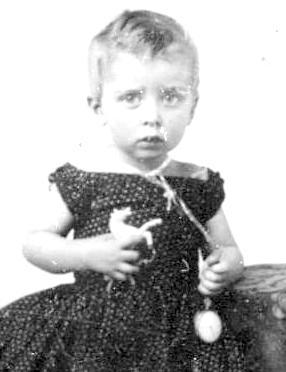
Figure 1.--At mid-19th Century, virtually all little boys wore dresses--virtually identical to those worn by their sisters. This photograph was probably taken about 1850. |

|
Little boys wore dresses throughout the 19th century. At the beginning of the century boys wore dresses little different than their sisters. Most boys wore dresses until breeching at 4-6 years of age, but some boys wore dresses and other skirted dresses even longer. By the end of the decade boys were wearing dresses styled plainer than their sisters or even kilt suits instead of dresses. Boys were being breeched at an earlier age and it became much less common for older boys to wear them. A very substantial change occurred in the 1890s and by the turn-of-the 20th century it had become much less common for boys to wear dresses. Given that this was a common practice for 300-400 years, we are not sure why this shift occurred so abruptly in the 1890s.
Little boys continued to wear girls dresses in the varying fashion of the day. Mothers were advised to give more consideration to comfort in their children's dresses. The dresses often had low necklines and were ankle length at the beginning of the century. Both boys and girls wore identical styles. The low necklines which look girlish to us now were simply a reflection of the styles of the day. Some suggest that the only way of identifying the gender of a child is a colored ribbon or sash. Others question this and suggest that modern color conventions are a very recent development. The ankle length dresses were very fashionable, but pantalettes, both plain and lacey might peek out at the hem. By mid-century knee-length dresses were fashionable for younger children. As the dresses got shorter, fashionable pantalettes became a more important part of a child's outfit to discreetly cover his or her legs.
Dress styles appear to have changed significantly from the early decades of the century. While women's dresses were still long, dresses for children became shorter. At mid century they might be worn with pantalettes to cover the leg, but by the 1860s children might appear bare legged with short ankle socks. A 1845 American "primitive" painting by Susan Waters, The Lincon Children appears to show two twin sisters in identical dresses and pinafores. The child between them appears to be a boy. He wears a dress without a pinafore. His hair is not nearly as carefully done. He wears a shorter dress than his sister, but his legs are modestly covered by pantalettes. The graceful soft Empire dresses of the early 19th century had by mid-century evolved into dresses with bussles, bows, and bonnets which one again had girls trussed up and restricted from free movement.
The late 19th century was a period of shifting styles and fashion. Many boys especially in the 1870s-80s continued to wear dresses, in some case relatively old boys. Some little boys wore all-white dresses, lavish with ruffles, sashes, extraordinary delicate eyelets and fine embroideries. On the other hand,some quite little boys were allowed to wear knee pants. Dress fashions varied considerably. Some quite plain dresses were made for boys and marketed as boy dresses, especially by the 1890s. Many dresses were marketed as chidren's dresses meaning that they could be worn by either boy or girls. There were also girls' dresses. Of course the final decission was the mothers in such matters and some mothers simply ignored such labels if a particular style appealed to her. Some quite elaborate styles trimed in lace and ruffles were also sold as boys dresses. The development of photography and the growing popularity of women's magazines meant that many more images and information is available on 19th century boys. A very substantial change occurred in the 1890s and by the turn-of-the 20th century it had become much less common for boys to wear dresses. Given that this was a common practice for 300-400 years, we are not sure why this very pronounced shift occurred in the 1890s.
Navigate the Historic Boys' Clothing Web chronological pages:
[The 16th-17th centuries]
[The 18th century]
[Late 18th Century]
[The 1800s]
[The 1810s]
[The 1820s]
[The 1830s]
[The 1940s]
[The 1950s]
[The 1960s]
Navigate the Historic Boys' Clothing Web dress pages:
[Return to the: main dress era page]
[Return to the: main dress page]
[Pinafores]
[Sausage curls]
[Smocks]
[Bodice kilts]
[Kilts]
[Fauntleroy dresses]
[Sailor dresses]
[Fancy dresses]
[Dresses: 17th Century]
[Dresses: 18th Century]
[Dresses: Early 20th century]
[Difficult images]
[Movie dresses]
Navigate the Boys' Historical Clothing Web Site:
[Introduction]
[Activities]
[Bibliographies]
[Biographies]
[Chronology]
[Clothing styles]
[Countries]
[Contributions]
[FAQs]
[Glossaries]
[Satellite sites]
[Boys' Clothing Home]
